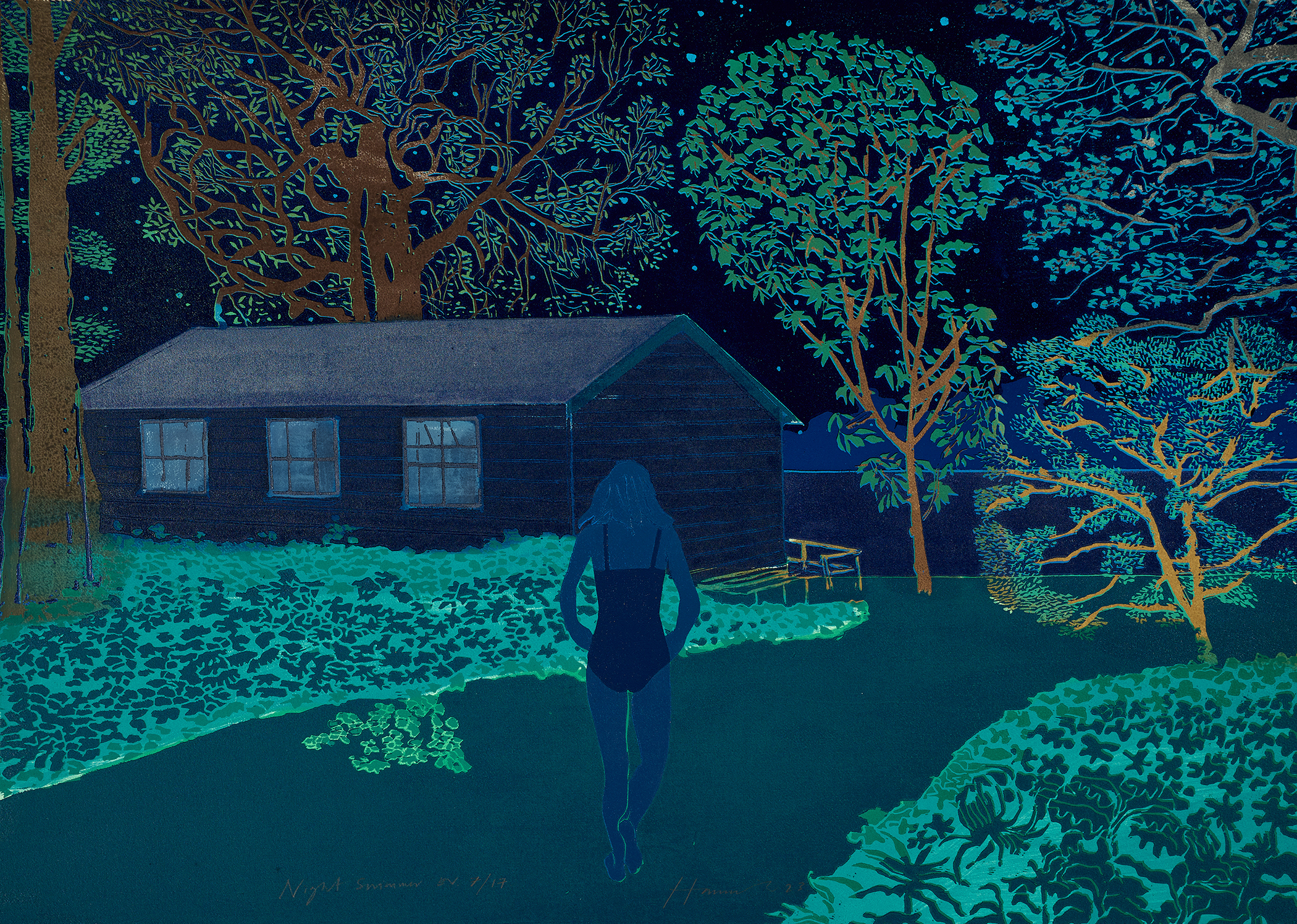As Tom Hammick’s collection debuts at the Gail Severn Gallery in Ketchum, the British artist gives patrons something to ponder.
From melancholy scenes of isolated figures to bright flowering fields and oceans, these wood prints and oil paintings truly capture the range of our human experience. Instead of thinking “either-or,” Hammick’s work combines inspirations, mediums and perspectives. He believes art begets art, and working with new subjects and mediums helps “paint” the picture of a full life.
Beginning his career studying Art History at the University of Manchester, Hammick was, as some young people are, without direction for the first bit of his life. However, he always enjoyed the arts, and after working as a stonemason on the spire of Salisbury Cathedral, he set foot in the Camberwell College of Art, and his world opened.
When asked why he chose the life of an artist, Hammick simply says, “I suppose in the end I just had to do it.”
Hammick has always loved the arts and draws inspiration from poets like Elizabeth Bishop and Robert Frost and painters like the classics Goya and Velasquez or the more contemporary Bob Thompson and Philip Guston. Seeing art as a “barometer” of the world, Hammick’s commentary on love and loss through paintings and printmaking helps lead the observer to the water of more profound emotion, but art does not make them drink.
In fact, Hammick made it abundantly clear when asked what he would say to patrons of his exhibitions, that he would say nothing at all (at least in theory) and hope that, like poetry, he gave them enough to elicit a more profound feeling but withheld enough for that feeling to be uniquely theirs.
Mainly working in printmaking and oil painting, Hammick divides his time between his two studios in South Bermondsey and Deptford. Although different on the surface (literally and figuratively), the two styles complement each other. Similar to the way a classic novel influences a play, deciding which medium to work in doesn’t mean forsaking the other. The creative process is how these two mediums differ from Hammick’s perspective. He comments that painting can be a little isolating. In a world of distraction, getting into the right mind space is challenging, especially with constant notifications and noise from technology.
In contrast, getting lost in the printmaking process distracts from the immensity of the final piece and lets him work collaboratively with others and focus more on the process than the final product. When carving intricate details or mapping out colors, the studio becomes a community of people working for a common goal.
Both of these mediums can be difficult but well worth it, and taking time to create work gives Hammick a way to escape the bustle of everyday life and center himself once more.
Talking to Hammick reminds you that the world is full of adventure. He champions a life of culture, saying, “Watch movies, eat good food, explore, be inquisitive,” since these sorts of things eventually blend together into someone’s perspective. He seems to be, instead of jaded, very revived by his life so far. He explained that, as a painter, you get to a certain point where you’ve experienced so much, “you’re on your own, really.”
Someone’s personal style comes from their experience and intrinsic feeling that no one can recreate. His scenes of isolated figures or dark scenery may seem melancholy at first, but the scenes are not necessarily gloomy in their message. Hammick enjoys providing an artistic commentary on facets of life like love and loss and the human condition. These heavier moments can absolutely include sadness; however, within those moments are joy and appreciation as well.
This mirrors the reality of life. Yet, sometimes the most solemn moments are connected to feelings of connection and appreciation for the people and the world around us.
Hammick provided background on his creative process for a series of paintings titled “My Sister’s Garden.” These include etchings, paintings, and pen and ink drawings combining lighter-colored flowers and skies with darker human figures and buildings. When visiting his sister “Koodge” in the English countryside during political unrest in England, Hammick observed his sister’s care for her garden with wonder. He called her a “shepherd of the Earth,” a lovely phrase that sums up the protection of her land, allowing life to flourish.
While Hammick was led to the arts, Koodge’s life journey led her to the earth. Both siblings found peace in their individual crafts, and Hammick attempted to recreate his amazement at the impact of caring for a piece of the planet and how quiet it is on the soul through art.
Hammick’s scenes tie directly with the natural environment he admired in the Western U.S. during his six-month solo trip to America before University.
He has always been fascinated by the “American Dream” and the idea of exploring the West and undeveloped land. As a result, he actively seeks out scenes of peace and calm to be his subjects and presents humans and nature working in
harmony.
With nature and culture closely tied in Sun Valley, his work feels local despite being produced miles away. His collection debuts from July 1st to September 1st.


